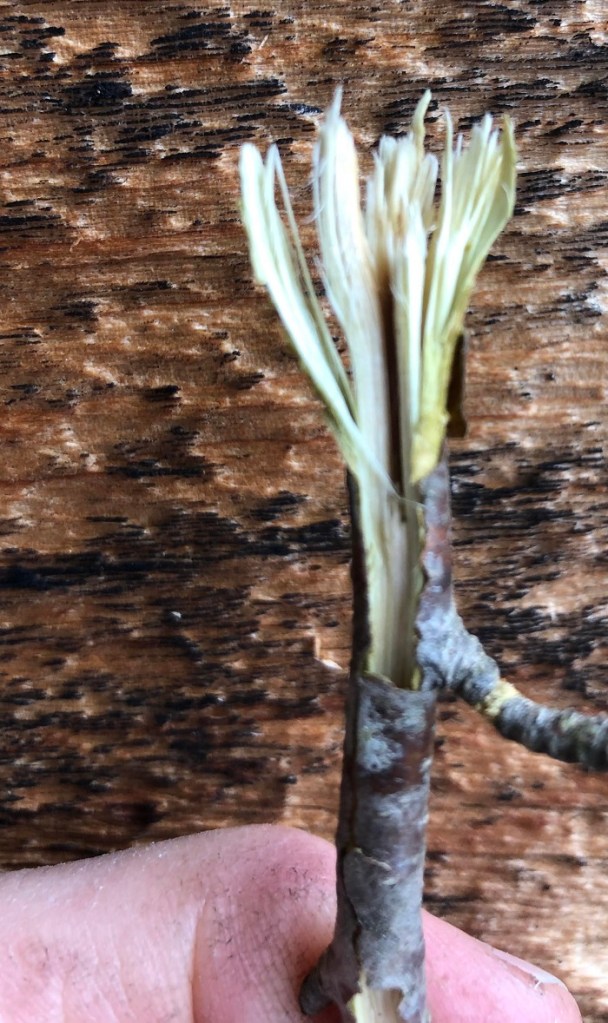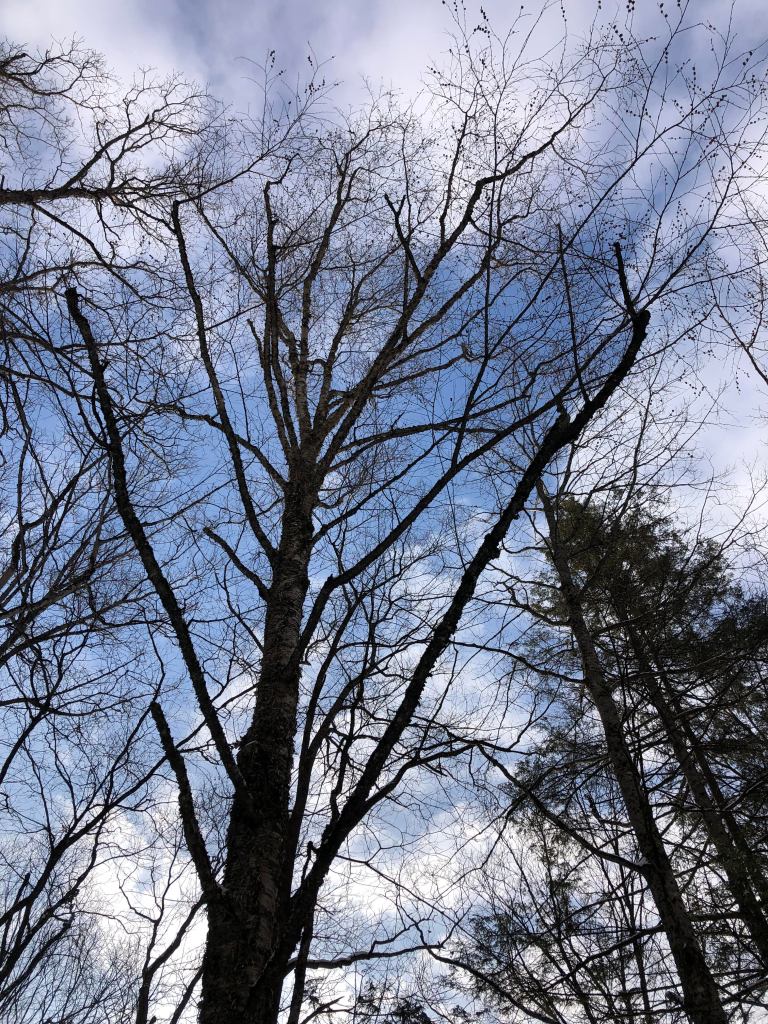Tasting Wintergreen: Ode to the Black and Yellow Birches
We have 5 native birch tree species in New England: black or sweet birch (Betula lenta); grey birch (Betula populifolia); river birch (Betula nigra), which confusingly is sometimes also called black birch; white birch (Betula papyrifera), which is also called paper or canoe birch; and yellow birch (Betula alleghaniensis). Birches are in Betulaceae or birch family. This family also includes speckled alder, hop hornbeam, musclewood (also called American hornbeam and ironwood), American hazelnut, and beaked hazelnut, all native New Englanders.
The two birches I am most familiar with as an edible are black and yellow birch. Both contain methyl salicylate, an organic liquid compound that smells and tastes like wintergreen. Ever eat wintergreen (Gaultheria procumbens) berries or chew on wintergreen leaves? Or how about eat a wintergreen life saver candy? Or drink birch beer? What you are tasting is methyl salicylate – at least in the flora and some traditional birch beers. The candy has artificial flavoring. If you appreciate that wintergreen taste, then you will like black and yellow birch.
How do you know if you have found black or yellow birch? First, observe the color of the bark. Both younger black and yellow birches have a sheen to their bark. Black birch has smooth black bark that greys and becomes more “plate-y” as ki ages. Yellow birch has shiny golden-silvery bark that peels – similarly to white birch but thinner curls. All birches are marked by horizontal lenticels (pores) which aid in transpiration. Branching is alternate. In the spring buds unfurl into toothed elliptical leaves, tapering to a point. Catkins bloom April-May and are wind pollinated. Black birch twigs are shiny golden to milk chocolate brown whereas yellow birch twigs have a green-red-brown hue. Do the scratch and sniff test. If you smell wintergreen, you have met with success.
Both black and yellow birch have similar health properties. They are analgesic, anti-inflammatory, and febrifuge, relieving minor aches, pains, and abnormally high body temperatures. They contain calcium, manganese, potassium, and phosphorus.
Black and yellow birch make a delicious tea that can be made in any season, but the wintergreen flavor seems strongest in the spring when the sap is flowing. To make birch tea, use a pocketknife and cut off several shoots. You may even notice that the deer have already been doing that. Unlike them, you will not be eating the twigs. But feel free to gnaw on one. Boil water. Once the water has boiled, turn off the heat and allow to sit for several minutes. You don’t want to use boiling water over the twigs as it will evaporate the wintergreen oil. Snip the twigs and leaf buds so they fit into the pot, cover with a lid, and let them steep at least 20 minutes. The tea will become a golden-red color as it steeps. Because there are no bitter tannins in birch bark you can even steep overnight. When the water is cool enough, pour the tea into a glass jar and it is ready to drink. Drink the tea within a day or two, else the flavor from the wintergreen oil may be lost to the ethers.
Another way you can drink from the black and yellow birch trees is to tap them for their sap. They can be tapped similarly to a sugar maple tree and tapping usually takes place in March and into early April, just after maple sugaring season. Birch sap contains about 1% sugar to the 2-2.5% sugar that sugar maples contain in their sap. You can tap a birch using a knife to gently push into the sapwood layer, past the protective bark, and right underneath the cambium layer. The sapwood is the layer that transports nutrients and water through the tree. If you have knocked into the proper layer, you will notice water trickling down the tree from the wound you just made. That is the sap you want to catch. Just below that wound, cut a thin notch in the bark to create a tab. This tab will then direct the sap to drop into your camping cup that you tie around the tree. If you have a maple tap and bucket already, you can certainly reuse them for tapping the birch tree. Collect the sap then seal the wound. Pine pitch works well for sealing wounds. Drink this spring tonic and feel renewed! Sap will keep a few days in the fridge, but it is best to drink fresh from the tree.
In a pinch, twigs can also be used as a toothbrush. Fray the twig with your teeth and then brush them. You get the methyl salicylate anti-inflammatory properties, the sweetness of xylitol, a sugar alcohol which is known for inhibiting bacteria and plaque, and the freshness of wintergreen breath.
Methyl salicylate is also an ingredient used in external analgesic oils, salves, and rubs for sore muscles and minor aches and pains. To make birch massage oil you need to scrape the inner bark from the black or yellow birch twigs you collect into a jar and cover the scrapings with olive oil. Let the oil sit for 4 weeks then strain out the scrapings. Massage the oil into sore muscles.
As with any new ingredient you are introducing to your body, use a light touch, internally and externally, so that you can be aware of any potential side effects. Though methyl salicylate is relatively safe and has both internal benefits as a tea or sap and external benefits as a rub, overdosage is possible. Do not take if you are allergic to willow bark (salicin) or aspirin (salicylic acid). Consult your local herbalist for more information and dosage if you are interested in birch’s medical uses.
Blessings upon you and the Land this spring and of course, happy foraging!
Arianna Alexsandra Collins, naturalist, poet, writer, wild edible enthusiast, and Wiccan High Priestess lives in Ashfield, MA.
This article appears in the March 2022 edition of The Ashfield News.
Like Hearken to Avalon on Facebook and learn more about the magical world and natural history of plants and the Faie, and human interactions with them.
Additional resources:
Watch how to tap a black or yellow birch – in this example the forager is using a silver birch where she lives in Austria: https://youtu.be/5Zc6M5nNNFs
Here is another article on how to match black birch tea
https://northernwoodlands.org/knots_and_bolts/black-birch-tea
Here are instructions on how to make birch oil
https://druidgarden.wordpress.com/tag/how-to-use-black-birch/









